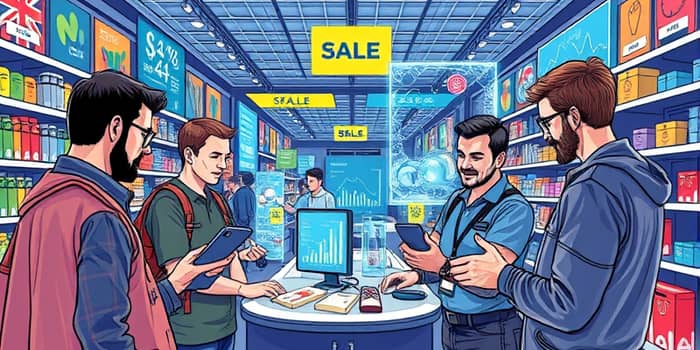
As the retail landscape evolves rapidly in mid-2025, traders are deploying innovative strategies and cutting-edge technology to stay ahead of market shifts and consumer demands.
The U.S. retail sector continues its steady expansion, with total sales forecasted to grow between 2.7% and 3.7% in 2025, pushing annual revenue toward $5.42–$5.48 trillion. After a 3.6% rise in 2024, these projections align with pre-pandemic growth averages, signaling resilient consumer spending despite global uncertainties.
Online and non-store channels are particularly robust, expected to achieve 7–9% year-over-year growth and approach $1.6 trillion in sales. This segment’s dynamism underscores the enduring consumer shift toward digital convenience and 24/7 shopping access.
Retail traders are embracing digital tools and data insights with unprecedented enthusiasm. From small boutiques to national chains, omnichannel strategies and AI-driven personalization dominate boardroom discussions and budget allocations.
Key behavioral shifts include:
These trends reflect an industry-wide drive for agility, flexibility, and resilience as traders navigate inflationary pressures and shifting policy landscapes.
Innovation remains at the core of retail success. Leading traders are integrating advanced solutions to optimize every phase of the customer lifecycle, from discovery to delivery.
Major technology pillars include:
By harnessing predictive analytics and inventory management, retailers can minimize stockouts, reduce holding costs, and tailor promotions with surgical precision.
Despite strong sales, the retail sector faces headwinds. Policy uncertainty around trade, labor, and environmental regulation weighs on strategic planning. Meanwhile, persistent inflation and cost-of-living concerns force traders to balance margin protection with consumer affordability.
Sustainability has emerged as both a challenge and an opportunity. Forward-thinking traders are integrating eco-friendly sourcing and packaging to meet growing consumer demand for responsible brands, thereby converting green credentials into competitive advantage.
The modern retail workforce demands a novel blend of technical and interpersonal capabilities. Employers prioritize AI fluency and data-driven decision-making, ensuring teams can leverage complex platforms and interpret analytics outputs.
Simultaneously, creativity and adaptability remain invaluable—retailers need problem-solvers who can pivot during supply chain disruptions and tailor unique in-store experiences that digital cannot replicate.
As mid-2025 unfolds, successful retail traders are zeroing in on several strategic initiatives to future-proof operations:
By maintaining focus on customer-centric innovation and workforce development, retail traders can navigate volatility and capture growth in an ever-evolving marketplace.
In this dynamic environment, staying informed, connected, and adaptable isn’t just an advantage—it’s a necessity for any trader aiming to thrive in 2025 and beyond.
References













